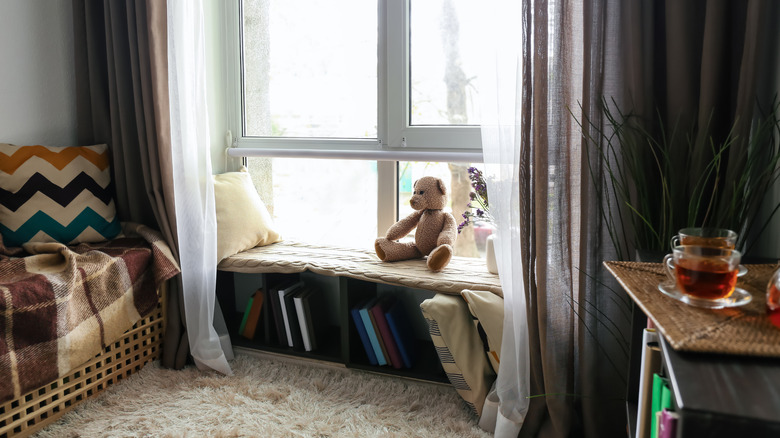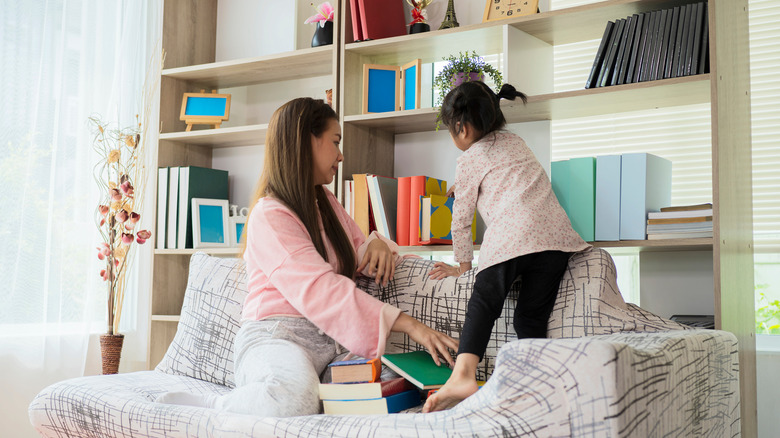How To Create A Home Library In A Small Space
Would you read more if you knew it was good for you? Bookworms can rejoice, because according to Inc.com, reading for just a few minutes a day can benefit you in big ways, like making you feel up to 68% less stressed. Reading can also increase connections in your brain and help you stay sharp as you age. The average American household owns about 114 books (via Big Think). Owning a lot of books may be great for your mental health and brain functioning, but it can be hard to keep all your tomes and texts physically organized, especially if you live in a small space.
Enter the home library. A home library is a designated area in your house where you can keep your books clean, organized, and ready to read at a moment's notice. Some larger homes come equipped with built-in shelves or den rooms, but these features aren't so common in apartments and small domiciles. Are you ready to reap all the benefits of a home library, but not sure how to make it work in your cramped space? We've gathered some great tips for small spaces to help you create the perfect home library, no matter the size of your house or your book collection.
Establish a reading nook or corner
The first step to creating a home library is to pick a dedicated reading space. This could be a corner in your living room, a bench in the hallway, or a nook under the window. Interior design website Arch 20, lays out two crucial elements in a home library: good shelving and a cozy reading chair. Invest in sturdy shelving that won't bend or collapse under the weight of all those books. Tall shelves that extend almost to the ceiling can create a coveted built-in effect, making you feel like you're snuggled up inside a grand library. The comfy chair can be anything that works for you and your home, whether that's a bean bag, rocking chair, or chaise lounge.
Of course, it can be tricky to do all of this when you're working with limited square footage, so remember that there is no strict definition for what counts as a home library. It could come down to one simple bookshelf in your living room, bedroom, or even your kitchen. Brit & Co. notes that floating shelves work as a savvy way to transform your space as they open up usable floorspace and can substitute for a headboard. If you can't permanently install anything into the walls, consider some smart furniture swaps like changing out a typical nightstand for a small bookshelf.
Organize your books
Once you've established your library space with sturdy shelves and a comfy reading chair, it's time to shelve your books. Organize them in any way that makes sense to you, whether that's alphabetical, by genre, or by spine color. Maybe you'd like a shelf dedicated to what you're currently reading. Exposure to books of any kind is also great for children — even if they don't read them — so helping your child create a kids' section in your home library can encourage them to engage. In fact, children who grow up with at least 80 books in their household tend to have better literacy, math, and communication technology skills as adults (via Big Think). If you have the space, make your kids' section look extra appealing by adding a child-sized chair or educational toys like an abacus.
Even if you don't have children, adding some non-book items can really complete the look of your home library. Many interior designers follow a rule of thirds for decorating bookshelves; a well-styled shelf can be laid out with one-third books, one-third décor, and one-third empty space, advises Reader's Digest. Home libraries look especially cultured and scholarly when styled with an academia aesthetic. This would include pieces like globes, pens, maps, and art. Finish your space with a soft, warm lamp, and you're ready to read!


